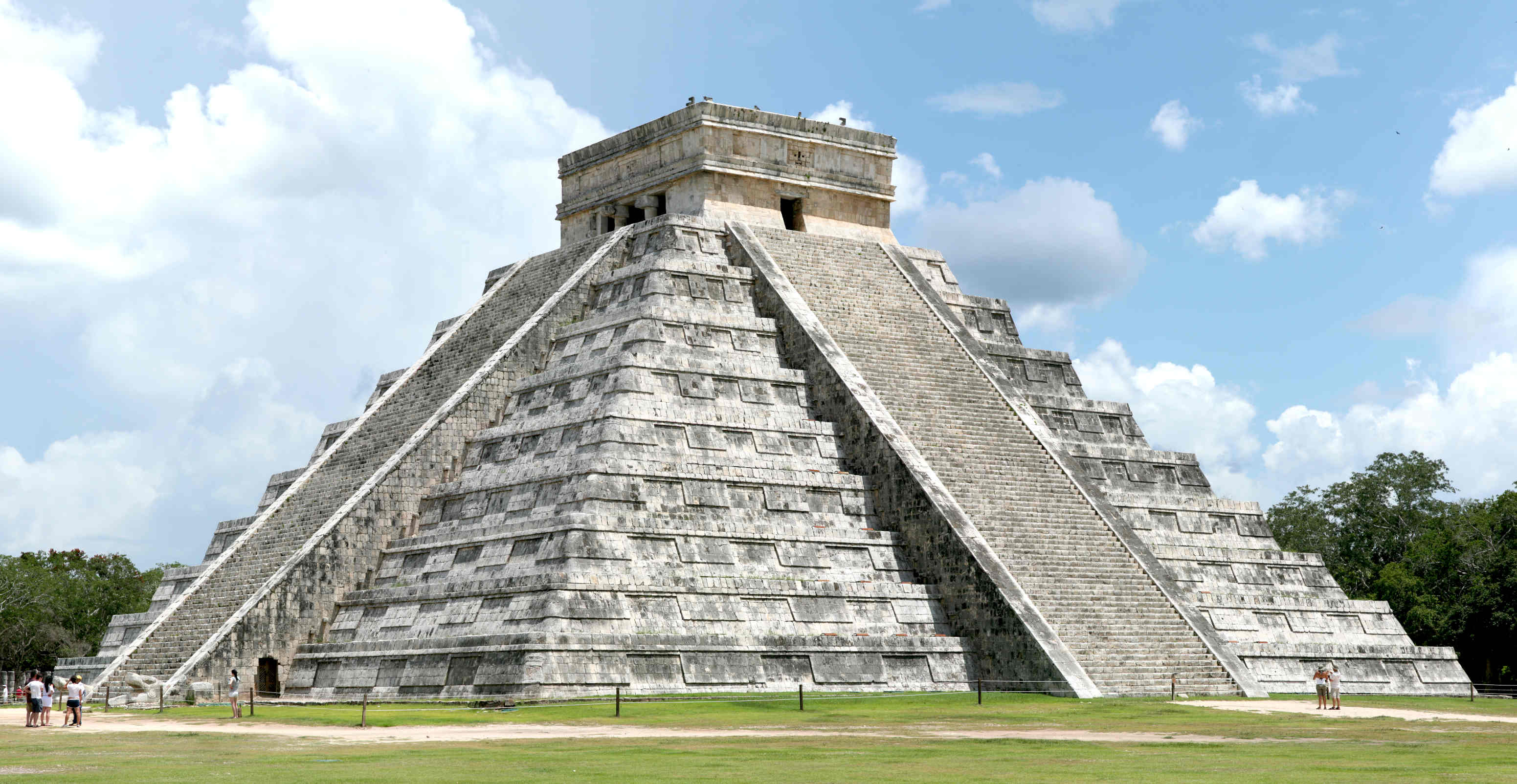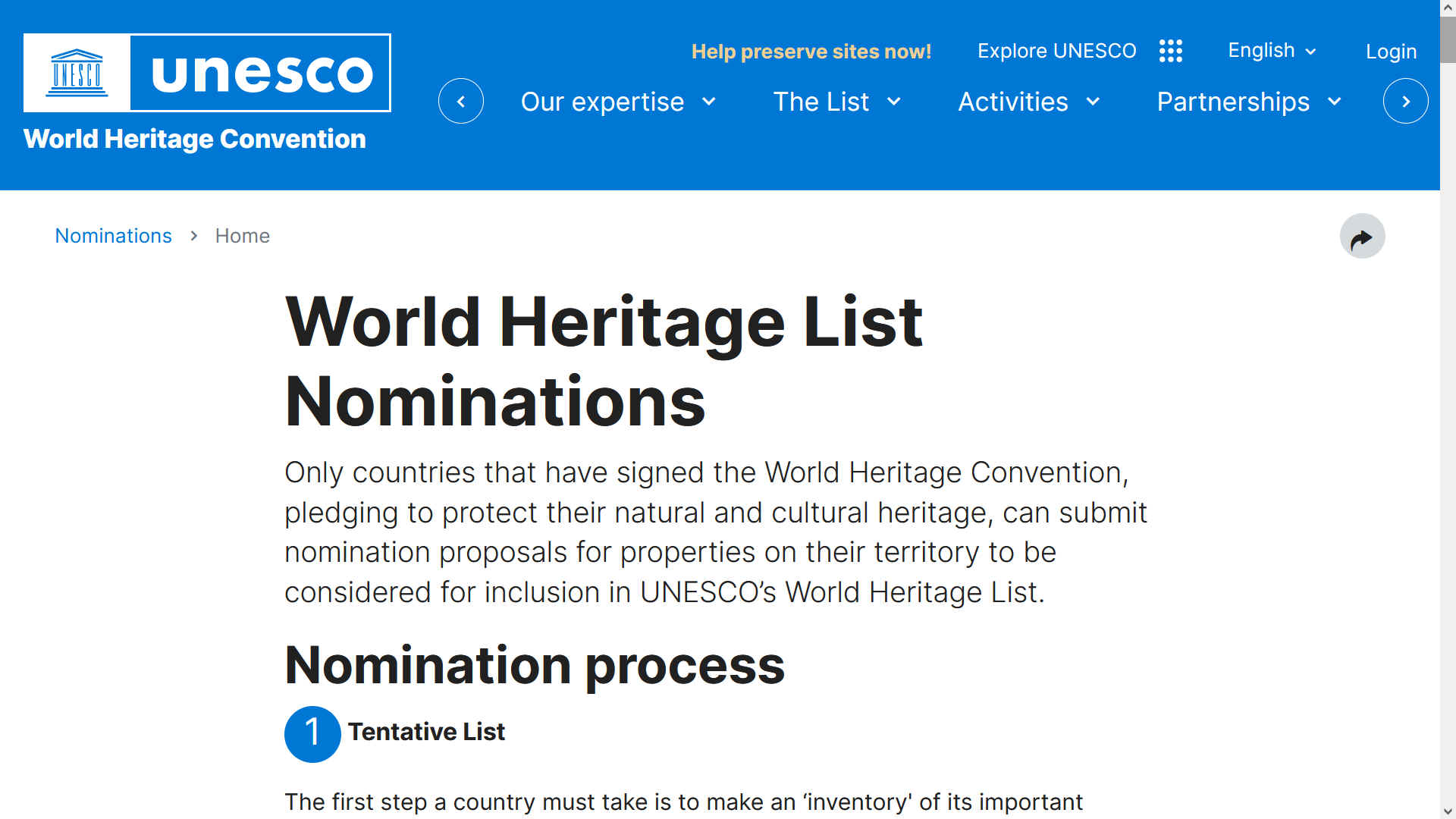
Three
millennia after the
ancient Egyptians built the
pyramids of
Giza, the Mayans built some impressive pyramids of their own. Chichen
Itza - an ancient Mayan city on the Yucatan Peninsula - is among the best-preserved remnants of this mysterious empire. To this day, it’s still not clear what caused
Mayans to desert their cities in 900 A.D. Hopefully in the coming years, this archaeological site and others in the region will help us find an answer.
Chichen Itza was a large pre-Columbian city built by the Maya people of the Terminal Classic period. The archeological site is located in Tinúm Municipality, Yucatán State, Mexico.
Chichen Itza was a major focal point in the Northern Maya Lowlands from the Late Classic (c. AD 600–900) through the Terminal Classic (c. AD 800–900) and into the early portion of the Postclassic period (c. AD 900–1200). The site exhibits a multitude of architectural styles, reminiscent of styles seen in central Mexico and of the Puuc and Chenes styles of the Northern Maya lowlands. The presence of central Mexican styles was once thought to have been representative of direct migration or even conquest from central Mexico, but most contemporary interpretations view the presence of these non-Maya styles more as the result of cultural diffusion.
Chichen Itza was one of the largest Maya cities and it was likely to have been one of the mythical great cities, or Tollans, referred to in later Mesoamerican literature. The city may have had the most diverse population in the Maya world, a factor that could have contributed to the variety of architectural styles at the site.
The ruins of Chichen Itza are federal property, and the site's stewardship is maintained by Mexico's Instituto Nacional de Antropología e Historia (National Institute of Anthropology and History). The land under the monuments had been privately owned until 29 March 2010, when it was purchased by the state of Yucatán.
Chichen Itza is one of the most visited archeological sites in Mexico with over 2.6 million tourists in 2017.
DESCRIPTION
Chichen Itza was one of the largest Maya cities, with the relatively densely clustered architecture of the site core covering an area of at least 5 square kilometers (1.9 sq mi). Smaller scale residential architecture extends for an unknown distance beyond this. The city was built upon broken terrain, which was artificially levelled in order to build the major architectural groups, with the greatest effort being expended in the levelling of the areas for the Castillo pyramid, and the Las Monjas, Osario and Main Southwest groups.
The site contains many fine stone buildings in various states of preservation, and many have been restored. The buildings were connected by a dense network of paved causeways, called sacbeob. Archeologists have identified over 80 sacbeob criss-crossing the site, and extending in all directions from the city. Many of these stone buildings were originally painted in red, green, blue and purple colors. Pigments were chosen according to what was most easily available in the area. The site must be imagined as a colorful one, not like it is today. Just like gothic cathedrals in Europe, colors provided a greater sense of completeness and contributed greatly to the symbolic impact of the buildings.
The architecture encompasses a number of styles, including the Puuc and Chenes styles of the northern Yucatán Peninsula. The buildings of Chichen Itza are grouped in a series of architectonic sets, and each set was at one time separated from the other by a series of low walls. The three best known of these complexes are the Great North Platform, which includes the monuments of the Temple of Kukulcán (El Castillo), Temple of Warriors and the Great Ball Court; The Osario Group, which includes the pyramid of the same name as well as the Temple of Xtoloc; and the Central Group, which includes the Caracol, Las Monjas, and Akab Dzib.
South of Las Monjas, in an area known as Chichén Viejo (Old Chichén) and only open to archeologists, are several other complexes, such as the Group of the Initial Series, Group of the Lintels, and Group of the Old Castle.
ARCHITECTURAL
STYLES
The Puuc-style architecture is concentrated in the Old Chichen area, and also the earlier structures in the Nunnery Group (including the Las Monjas, Annex and La Iglesia buildings); it is also represented in the Akab Dzib structure. The Puuc-style building feature the usual mosaic-decorated upper façades characteristic of the style but differ from the architecture of the Puuc heartland in their block masonry walls, as opposed to the fine veneers of the Puuc region proper.
At least one structure in the Las Monjas Group features an ornate façade and masked doorway that are typical examples of Chenes-style architecture, a style centered upon a region in the north of Campeche state, lying between the Puuc and Río Bec regions.
Those structures with sculpted hieroglyphic script are concentrated in certain areas of the site, with the most important being the Las Monjas group.
TOURISM
Chichen Itza is one of the most visited archeological sites in Mexico; in 2017 it was estimated to have received 2.1 million visitors.
Tourism has been a factor at Chichen Itza for more than a century. John Lloyd Stephens, who popularized the Maya Yucatán in the public's imagination with his book Incidents of Travel in Yucatan, inspired many to make a pilgrimage to Chichén Itzá. Even before the book was published, Benjamin Norman and Baron Emanuel von Friedrichsthal traveled to Chichen after meeting Stephens, and both published the results of what they found. Friedrichsthal was the first to photograph Chichen Itza, using the recently invented daguerreotype.
After Edward Thompson in 1894 purchased the Hacienda Chichén, which included Chichen Itza, he received a constant stream of visitors. In 1910 he announced his intention to construct a hotel on his property, but abandoned those plans, probably because of the Mexican Revolution.
In the early 1920s, a group of Yucatecans, led by writer/photographer Francisco Gomez Rul, began working toward expanding tourism to Yucatán. They urged Governor Felipe Carrillo Puerto to build roads to the more famous monuments, including Chichen Itza. In 1923, Governor Carrillo Puerto officially opened the highway to Chichen Itza. Gomez Rul published one of the first guidebooks to Yucatán and the ruins.
Gomez Rul's son-in-law, Fernando Barbachano Peon (a grandnephew of former Yucatán Governor Miguel Barbachano), started Yucatán's first official tourism business in the early 1920s. He began by meeting passengers who arrived by steamship at Progreso, the port north of Mérida, and persuading them to spend a week in Yucatán, after which they would catch the next steamship to their next destination. In his first year Barbachano Peon reportedly was only able to convince seven passengers to leave the ship and join him on a tour. In the mid-1920s Barbachano Peon persuaded Edward Thompson to sell 5 acres (20,000 m2) next to Chichen for a hotel. In 1930, the Mayaland Hotel opened, just north of the Hacienda Chichén, which had been taken over by the Carnegie Institution.
In 1944, Barbachano Peon purchased all of the Hacienda Chichén, including Chichen Itza, from the heirs of Edward Thompson. Around that same time the Carnegie Institution completed its work at Chichen Itza and abandoned the Hacienda Chichén, which Barbachano turned into another seasonal hotel.
In 1972, Mexico enacted the Ley Federal Sobre Monumentos y Zonas Arqueológicas, Artísticas e Históricas (Federal Law over Monuments and Archeological, Artistic and Historic Sites) that put all the nation's pre-Columbian monuments, including those at Chichen Itza, under federal ownership. There were now hundreds, if not thousands, of visitors every year to Chichen Itza, and more were expected with the development of the Cancún resort area to the east.
In the 1980s, Chichen Itza began to receive an influx of visitors on the day of the spring equinox. Today several thousand show up to see the light-and-shadow effect on the Temple of Kukulcán during which the feathered serpent appears to crawl down the side of the pyramid. Tour guides will also demonstrate a unique the acoustical effect at Chichen Itza: a handclap before the staircase of the El Castillo pyramid will produce by an echo that resembles the chirp of a bird, similar to that of the quetzal as investigated by Declercq.
Chichen Itza, a UNESCO
World Heritage
Site, is the second-most visited of Mexico's archeological sites. The archeological site draws many visitors from the popular tourist resort of Cancún, who make a day trip on tour buses.
In 2007, Chichen Itza's Temple of Kukulcán (El Castillo) was named one of the New Seven Wonders of the World after a worldwide vote. Despite the fact that the vote was sponsored by a commercial enterprise, and that its methodology was criticized, the vote was embraced by government and tourism officials in Mexico who projected that as a result of the publicity the number of tourists to Chichen would double by 2012. The ensuing publicity re-ignited debate in Mexico over the ownership of the site, which culminated on 29 March 2010 when the state of Yucatán purchased the land upon which the most recognized monuments rest from owner Hans Juergen Thies Barbachano.
INAH, which manages the site, has closed a number of monuments to public access. While visitors can walk around them, they can no longer climb them or go inside their chambers. Climbing access to El Castillo was closed after a San Diego, California, woman fell to her death in 2006.
ACROPOLIS
- ATHENS, ANCIENT GREEKS, PARTHENON, TEMPLE ATHENA NIKE
ANGKOR
WAT - HINDU BUDDHIST TEMPLE RELIGIOUS COMPLEX, CAMBODIA
CHICHEN ITZA - ANCIENT MAYAN CITY, YUCATAN PENINSULA, MEXICO
COLOSSEUM
- ROMAN HISTORIC CITY CENTRE, ROME, PANTHEON, ITALY
EASTER
ISLAND - RAPA NUI, POLYNESIAN HEAD STATUES, PACIFIC OCEAN
GREAT
WALL OF CHINA - 3RD CENTURY BC EMPEROR QIN SHI HUANG & MING DYNASTY
MACHU
PICCHU - PYRAMID, PERU, INCAN LOST CITY,
ANDES
PETRA
- TREASURY, AL-KHAZNEH, SIQ GORGE, NABATAEANS, SOUTHERN JORDAN
PYRAMIDS
- GREAT SPHINX, MEMPHIS NECROPOLIS, GIZA, EGYPT
TAJ
MAHAL - MAUSOLEUM BUILT BY SHAH JAHAN, AGRA, INDIA
VATICAN
CITY - THE WORLD'S SMALLEST, HOLIEST CHRISTIAN STATE
WESTMINSTER
ABBEY - HOUSES OF PARLIAMENT, LONDON, ENGLAND
TENTATIVE
LISTINGS
PORT
ROYAL - JAMAICAN SUNKEN CITY 1692, PIRATES HISTORY


